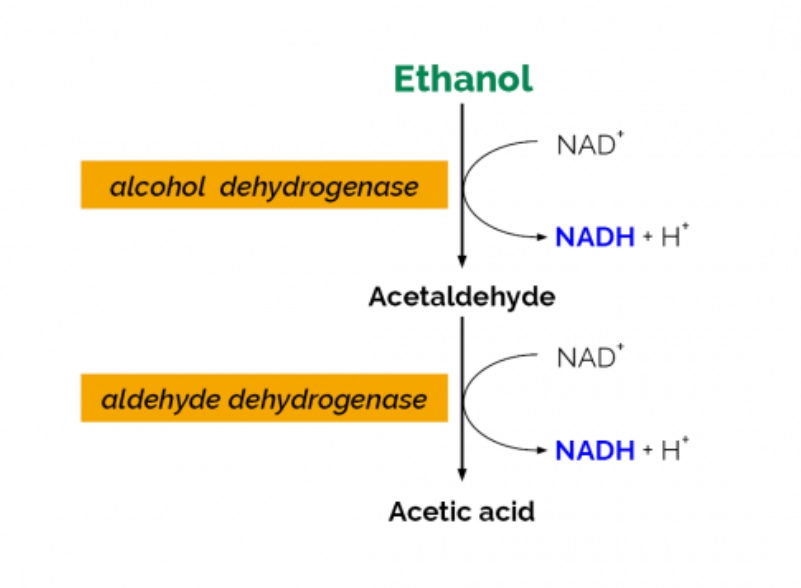- A. MANUAL ASSAY PROCEDURE:

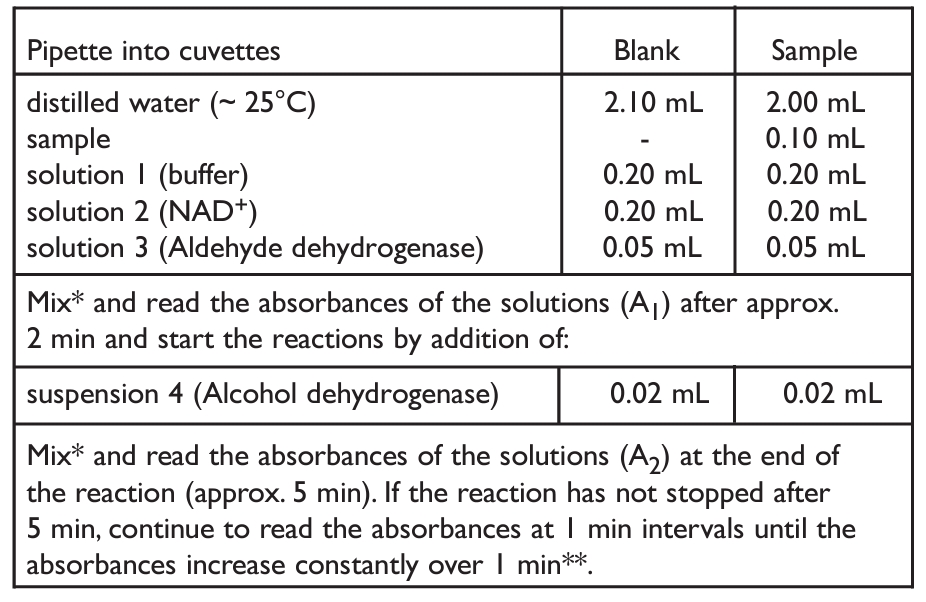

- B. AUTO-ANALYSER ASSAY PROCEDURE:
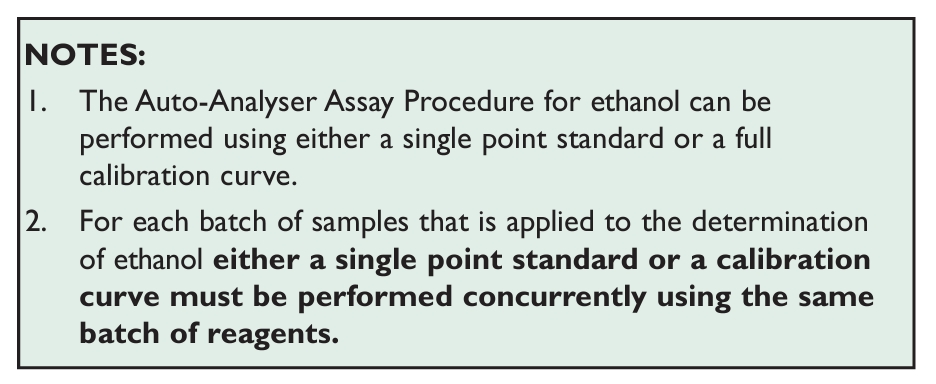
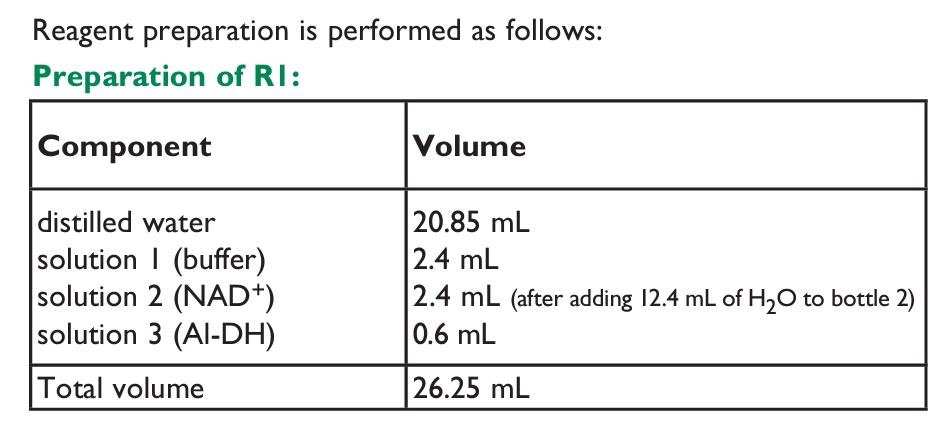
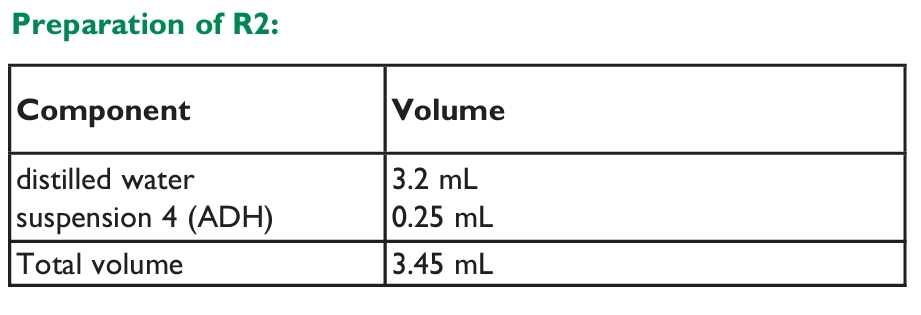
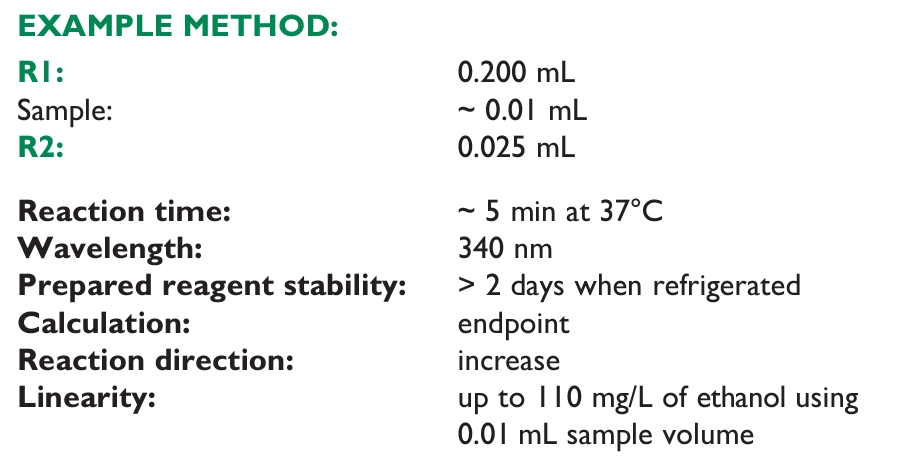
- C. MICROPLATE ASSAY PROCEDURE:
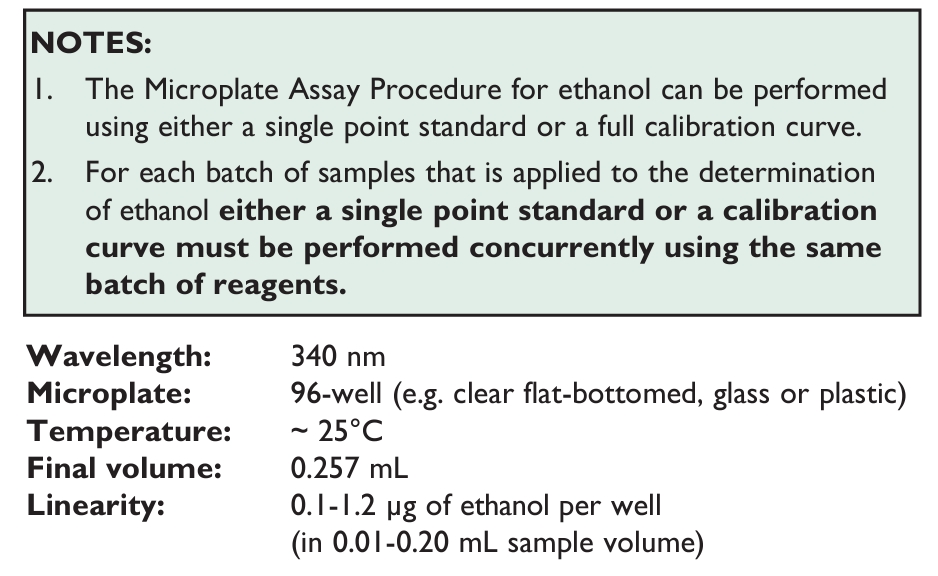
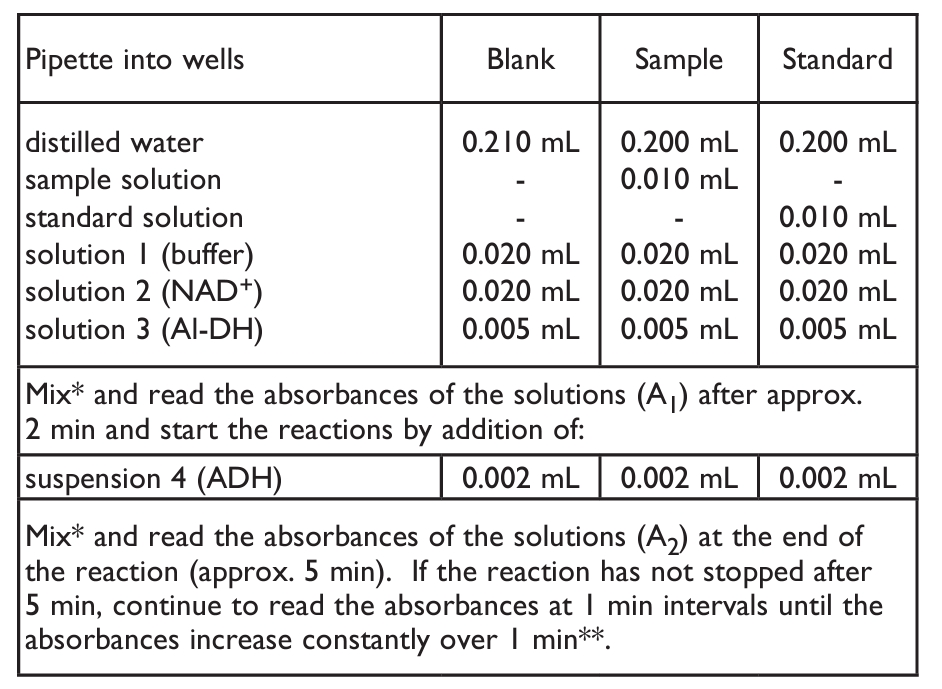

- SAMPLE PREPARATION:
1. Sample dilution.
The amount of ethanol present in the cuvette (i.e. in the 0.1 mL of sample being analysed) should range between 0.25 and 12 μg. The sample solution must therefore be diluted sufficiently to yield a concentration of between 0.01 and 0.12 g/L.
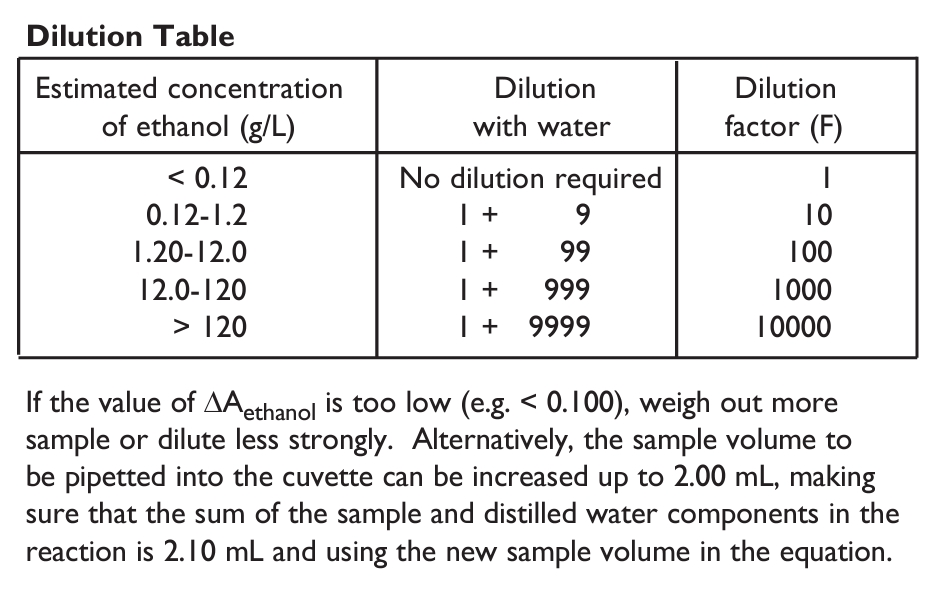
2. Sample handling.
Since ethanol is volatile, all operations should, where possible, be performed in sealed Duran® glass bottles.
It is also necessary to show great care in pipetting, diluting and filtering solutions. Plastic tips of dispensing pipettes should be rinsed 3 times with the solution before taking the aliquot. Cuvettes and plastic tips should be rinsed 3 times with ethanol-free distilled water and dried before use.
Ensure that reagent bottles (especially the distilled water container) are sealed immediately the required volumes are removed, to minimise absorption of alcohol from the air. When setting up the assays, do not employ the pipette that was used to aliquot the ethanol standard or other concentrated ethanol solution.
3. Sample clarification.
a. Solutions:
Carrez I solution. Dissolve 3.60 g of potassium hexacyanoferrate (II) {K4[Fe(CN)6].3H2O} (Sigma cat. no. P9387) in 100 mL of distilled water. Store at room temperature.
Carrez II solution. Dissolve 7.20 g of zinc sulphate (ZnSO4.7H2O) (Sigma cat. no. Z4750) in 100 mL of distilled water. Store at room temperature.
Sodium hydroxide (NaOH, 100 mM). Dissolve 4 g of NaOH in 1 L of distilled water. Store at room temperature.
b. Procedure:
Pipette the liquid sample into a 100 mL volumetric flask which contains approx. 60 mL of distilled water, or weigh sufficient quantity of the sample into a 100 mL volumetric flask and add 60 mL of distilled water. Carefully add 5 mL of Carrez I solution, 5 mL of Carrez II solution and 10 mL of NaOH solution (100 mM). Mix after each addition. Fill the volumetric flask to the mark, mix and filter.
4. General considerations.
(a) Liquid samples: clear, slightly coloured and approximately neutral, liquid samples can be used directly in the assay.
(b) Acidic samples: if > 0.1 mL of an acidic sample is to be used undiluted (such as wine or fruit juice), the pH of the solution should be increased to approx. 9.0 using 2 M NaOH, and the solution incubated at room temperature for 30 min.
(c) Carbon dioxide: samples containing a significant amount of carbon dioxide, such as beer, should be degassed by increasing the pH to approx. 9.0 with 2 M NaOH and gentle stirring, or by stirring with a glass rod.
(d) Coloured samples: an additional sample blank, i.e. sample with no ADH, may be necessary in the case of coloured samples.
(e) Strongly coloured samples: if used undiluted, strongly coloured samples should be treated by the addition of 0.2 g of polyvinylpolypyrrolidone (PVPP)/10 mL of sample. Shake the tube vigorously for 5 min and then filter through Whatman No. 1 filter paper.
(f) Solid samples: homogenise or crush solid samples in distilled water and filter if necessary.
(g) Samples containing fat: extract such samples with hot water at a temperature above the melting point of the fat, e.g. in a 100 mL volumetric flask at 60°C. Adjust to room temperature and fill the volumetric flask to the mark with distilled water. Store on ice or in a refrigerator for 15-30 min and then filter. Discard the first few mL of filtrate and use the clear supernatant (which may be slightly opalescent) for assay. Alternatively, clarify with Carrez reagents.
(h) Samples containing protein: deproteinise samples containing protein with perchloric acid; alternatively, clarify with Carrez reagents.
(i) Samples containing micro-organisms: filter samples through a 0.2 micron filter using a syringe apparatus.
商品特色
商品規格
- 商品規格
60 assays (manual) / 600 assays (microplate) / 600 assays (auto-analyser)
Bottle 1:
Buffer (15 mL, pH 9.0) plus sodium azide (0.02% w/v) as a preservative.
Stable for > 2 years at 4°C.
Bottle 2:
NAD+.
Stable for > 5 years below -10°C.
Bottle 3:
Aldehyde dehydrogenase solution (3.25 mL).
Stable for > 2 years below -10°C.
Bottle 4:
Alcohol dehydrogenase suspension (1.3 mL).
Stable for > 2 years at 4°C.
Bottle 5:
Ethanol standard solution (5 mL, 5 mg/mL).
Stable for > 2 years; store sealed at 4°C.
